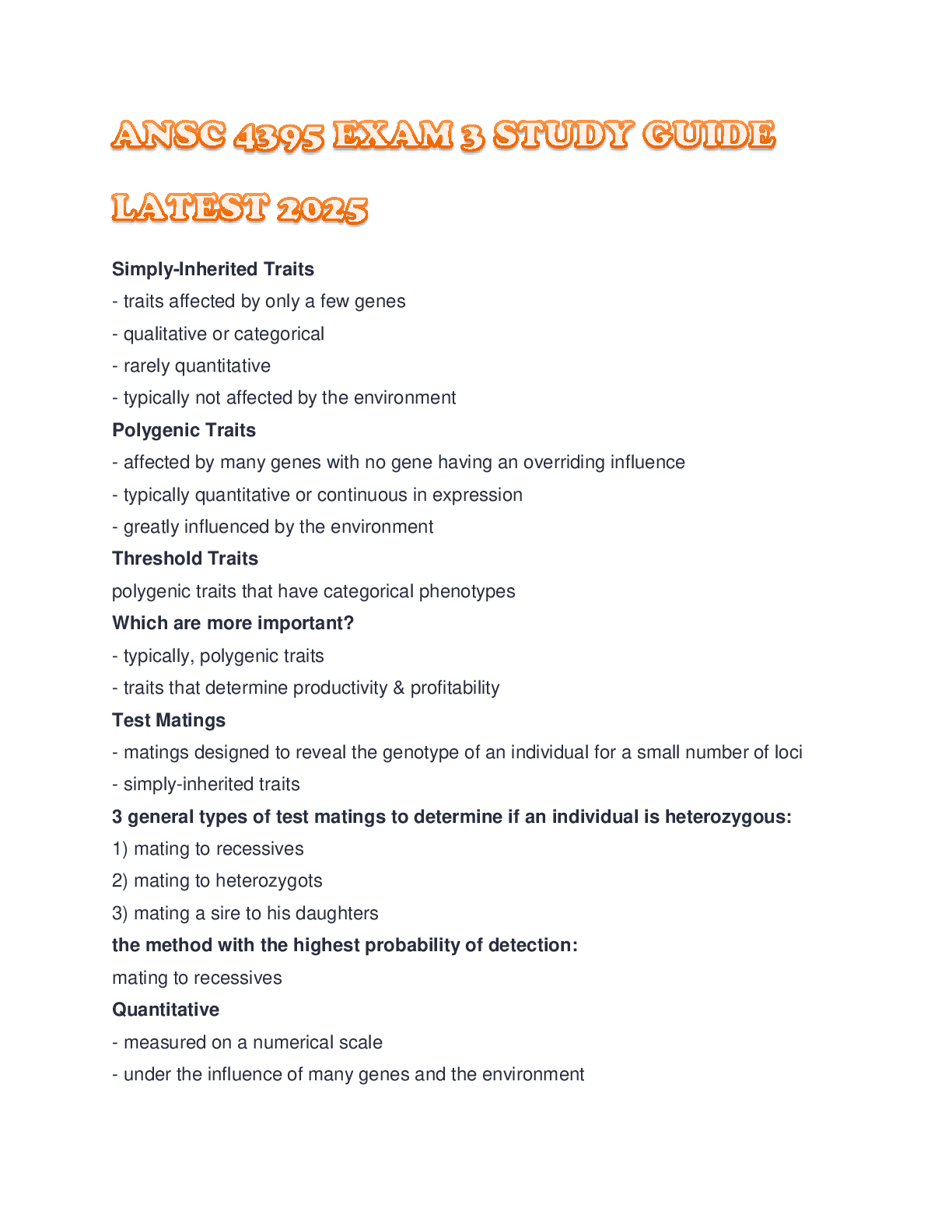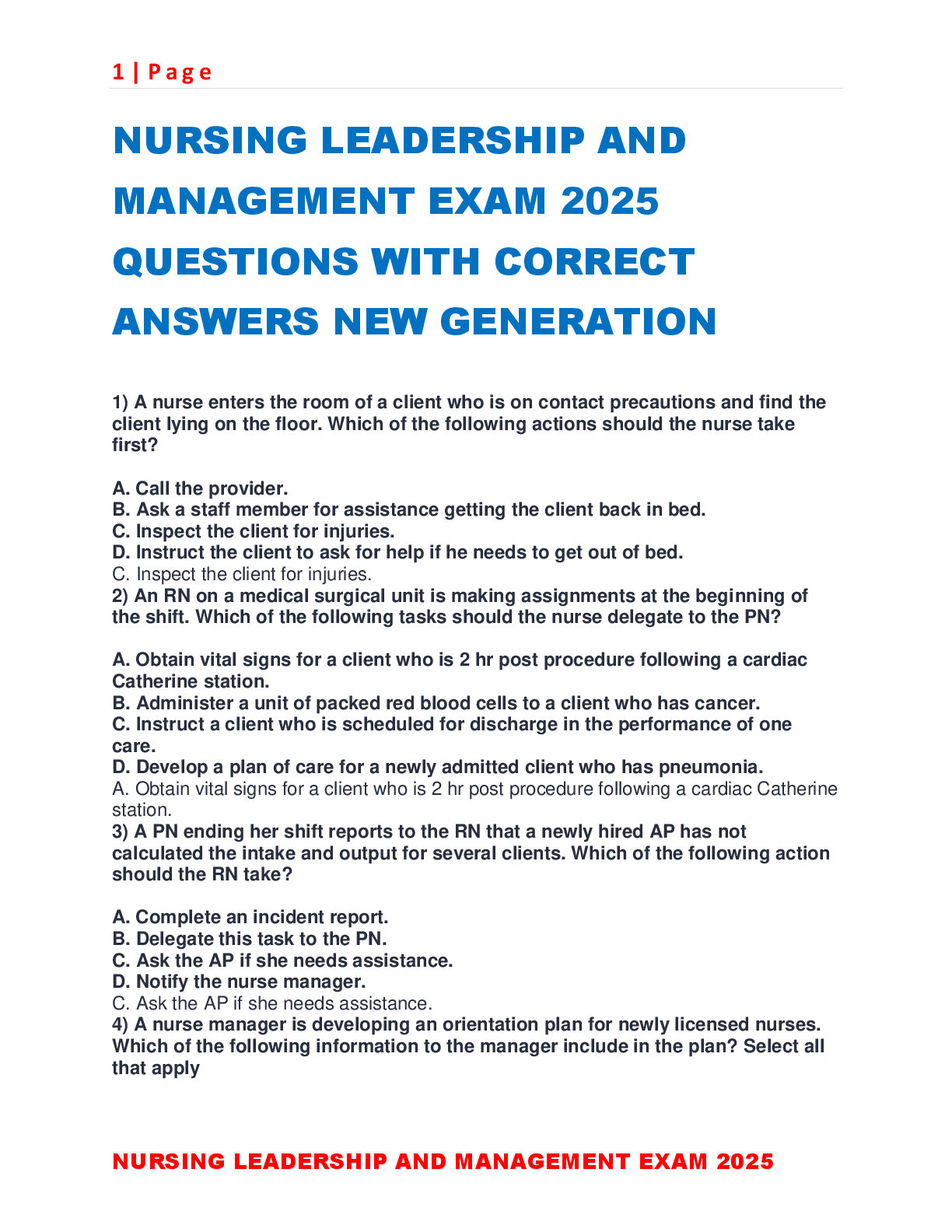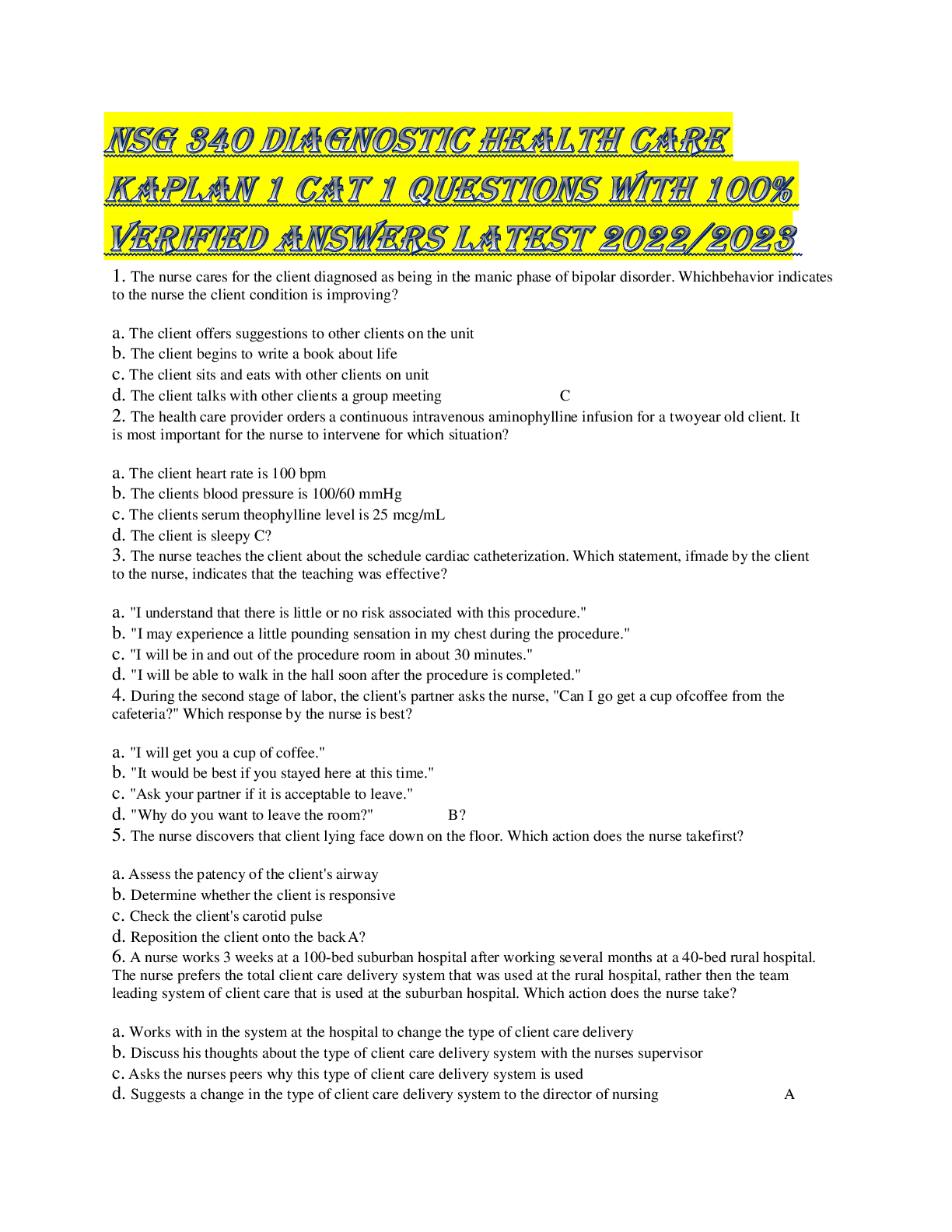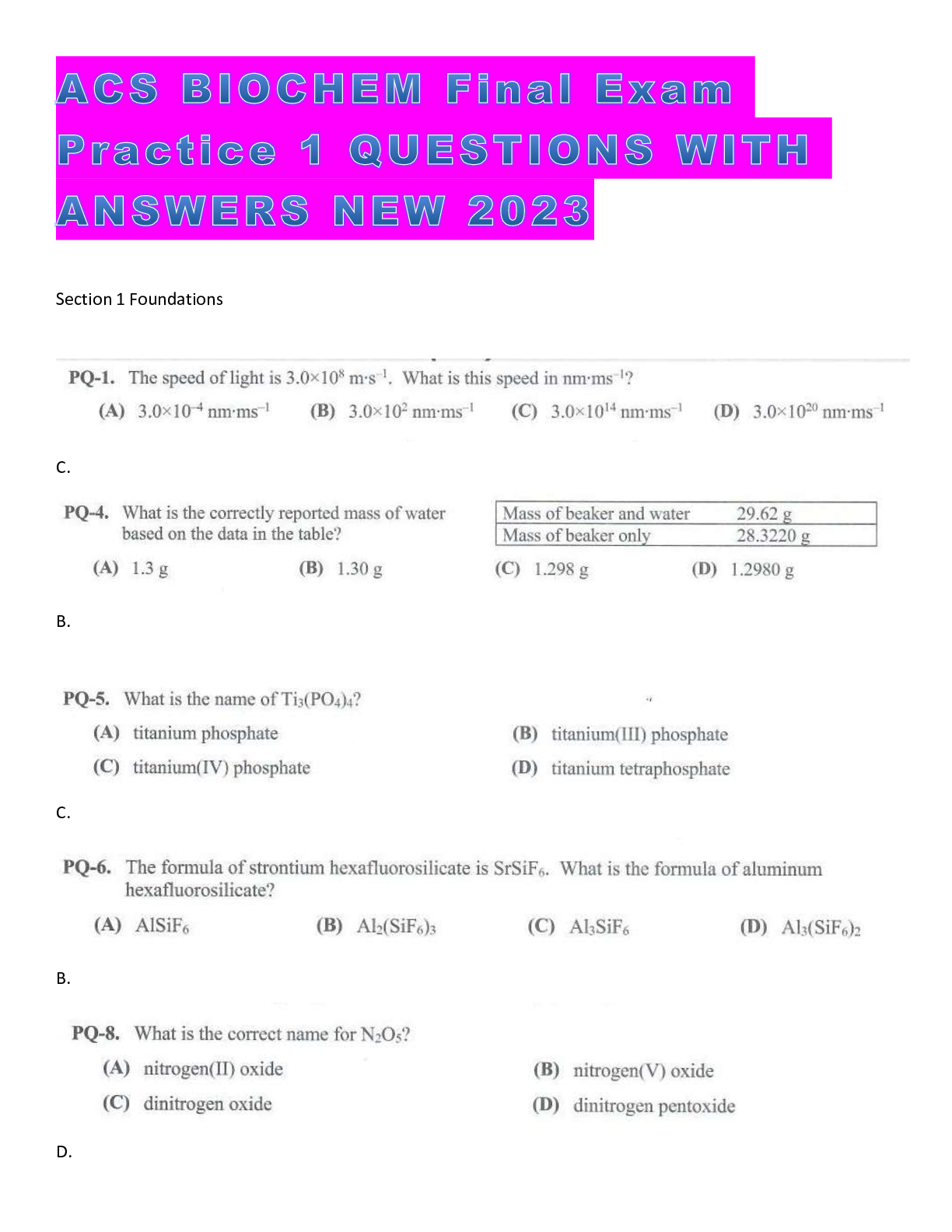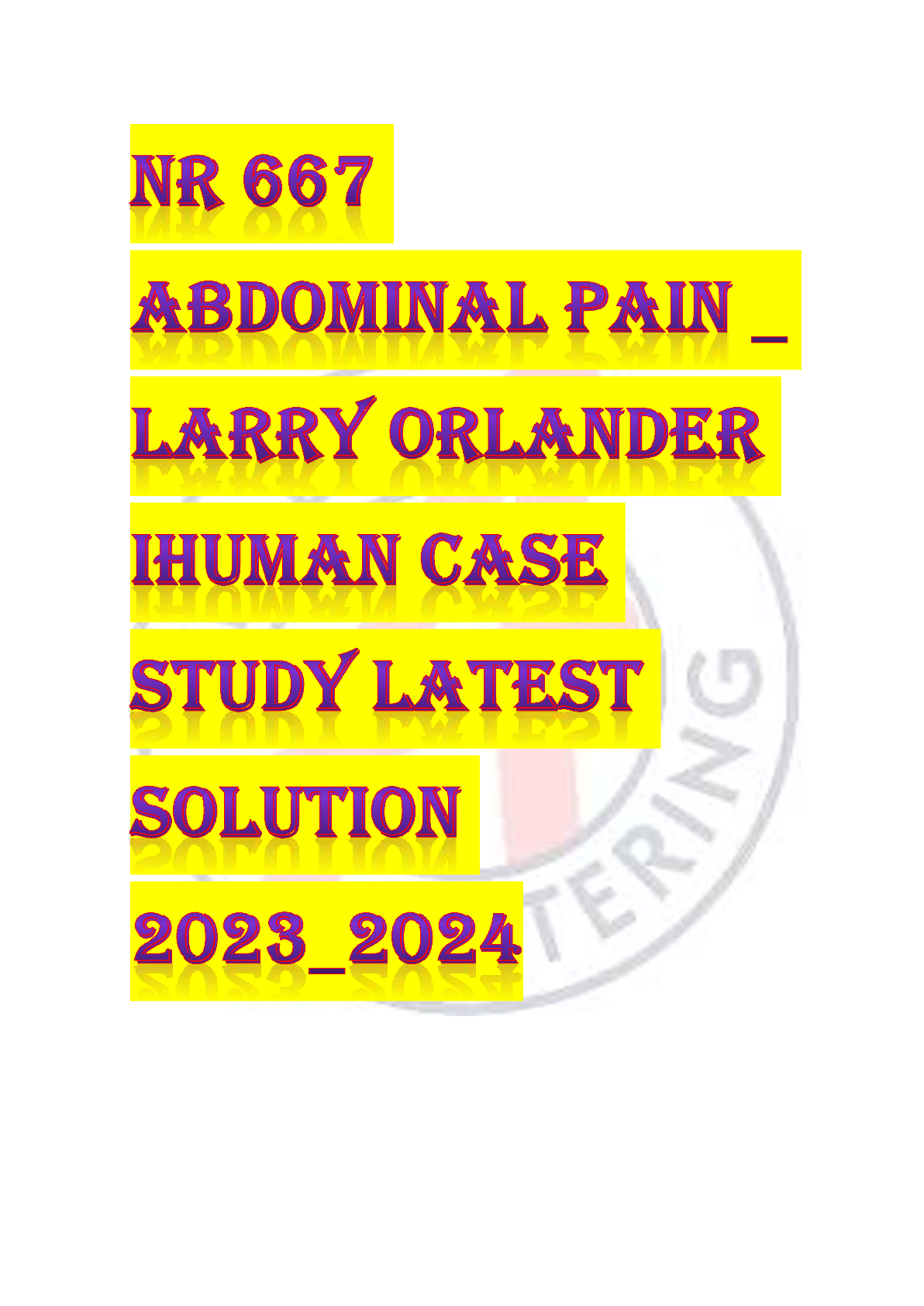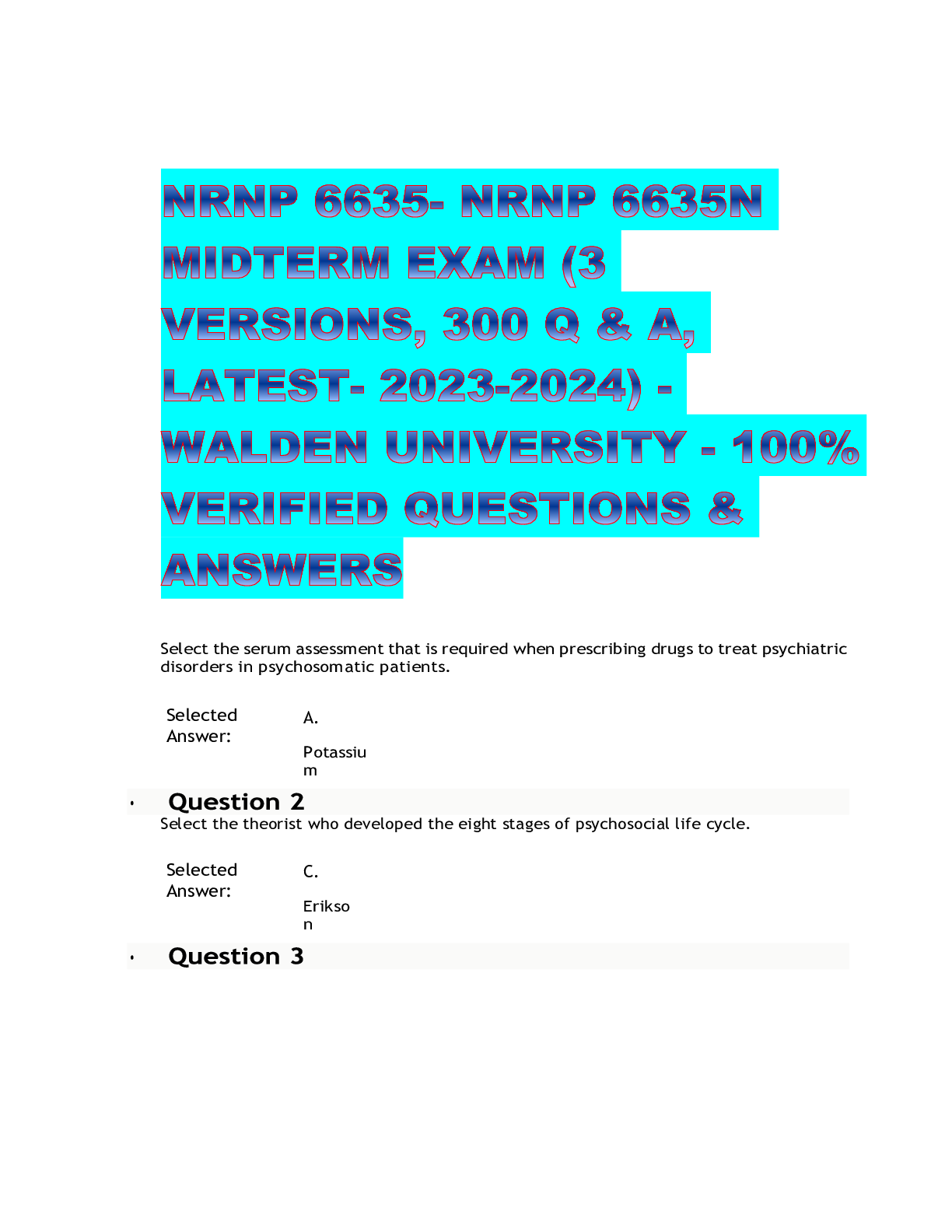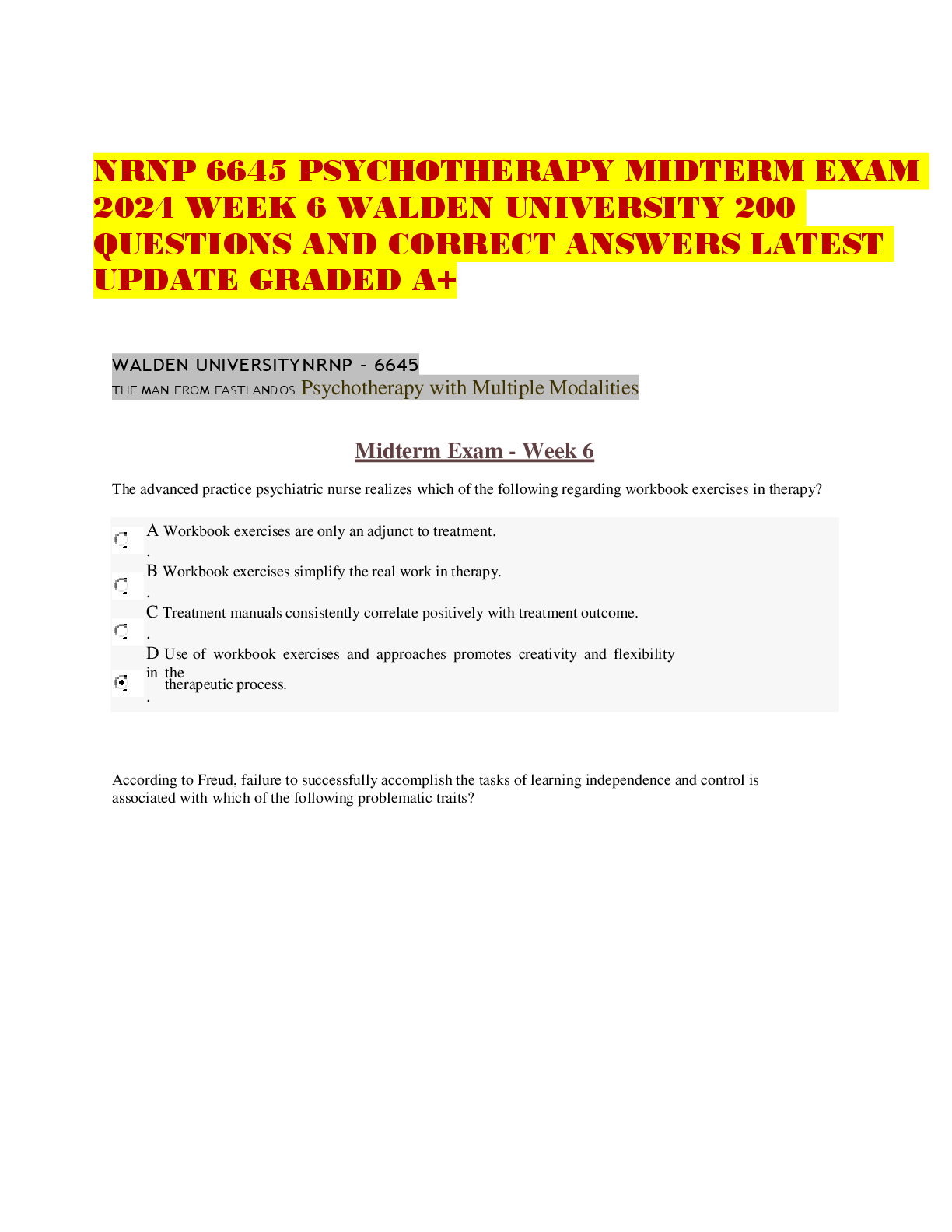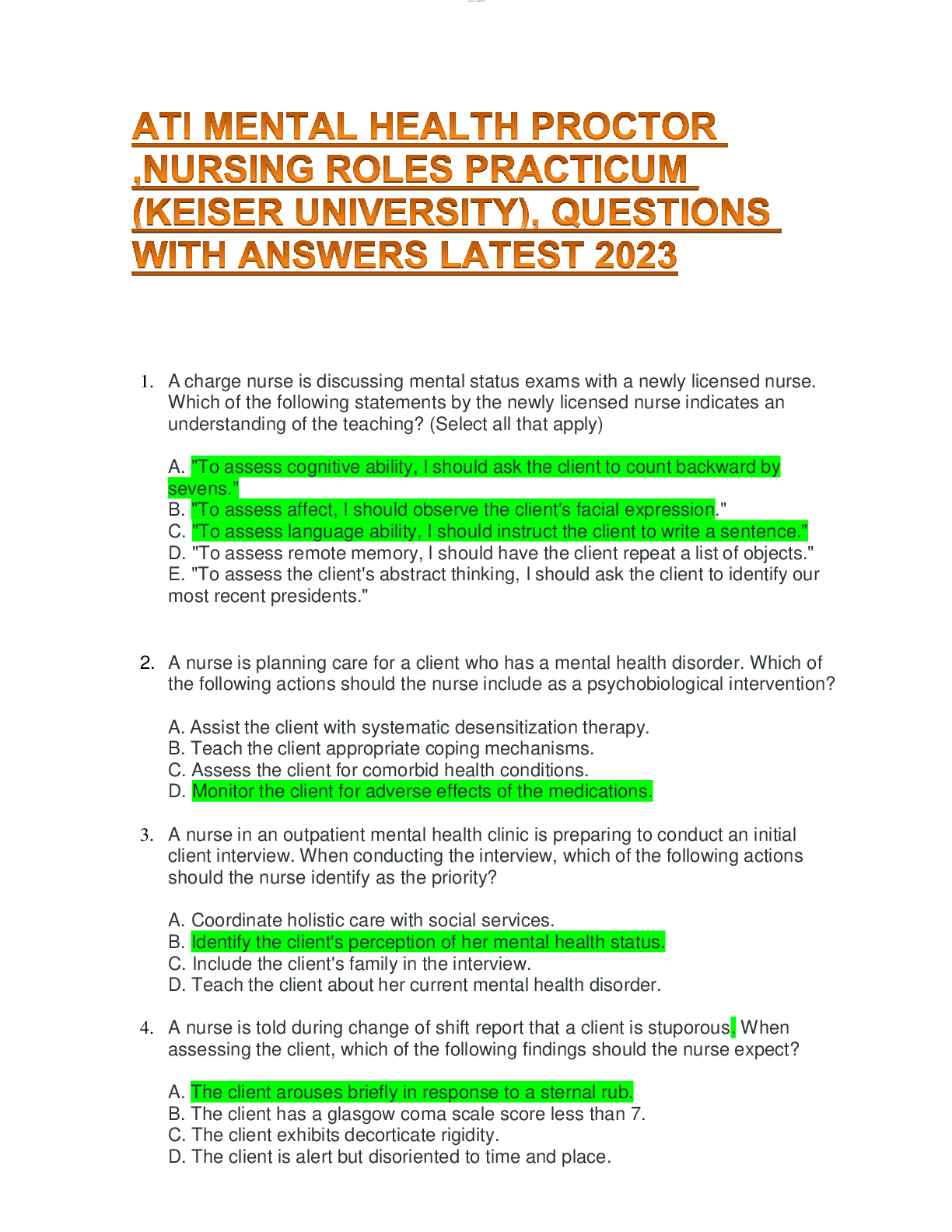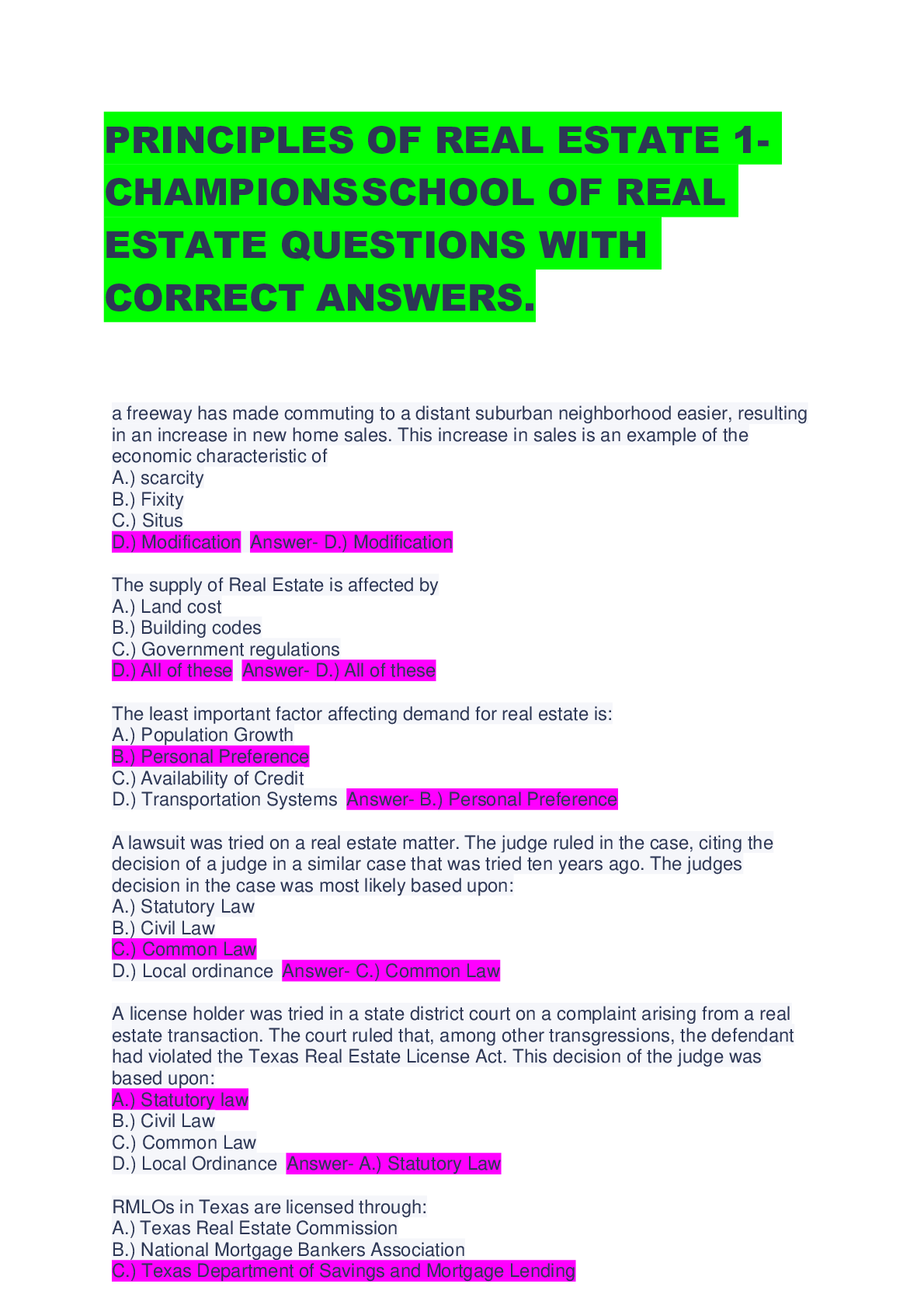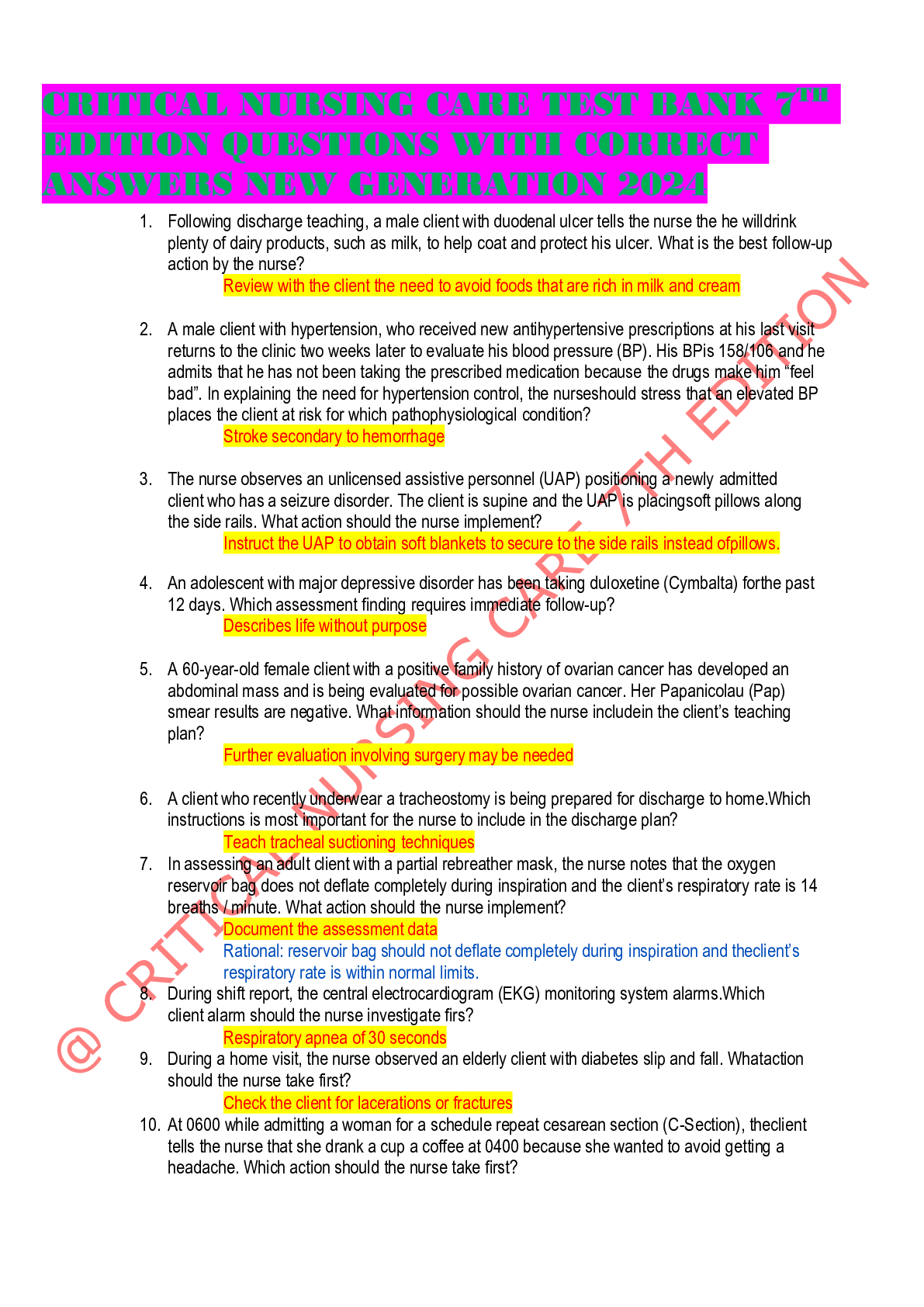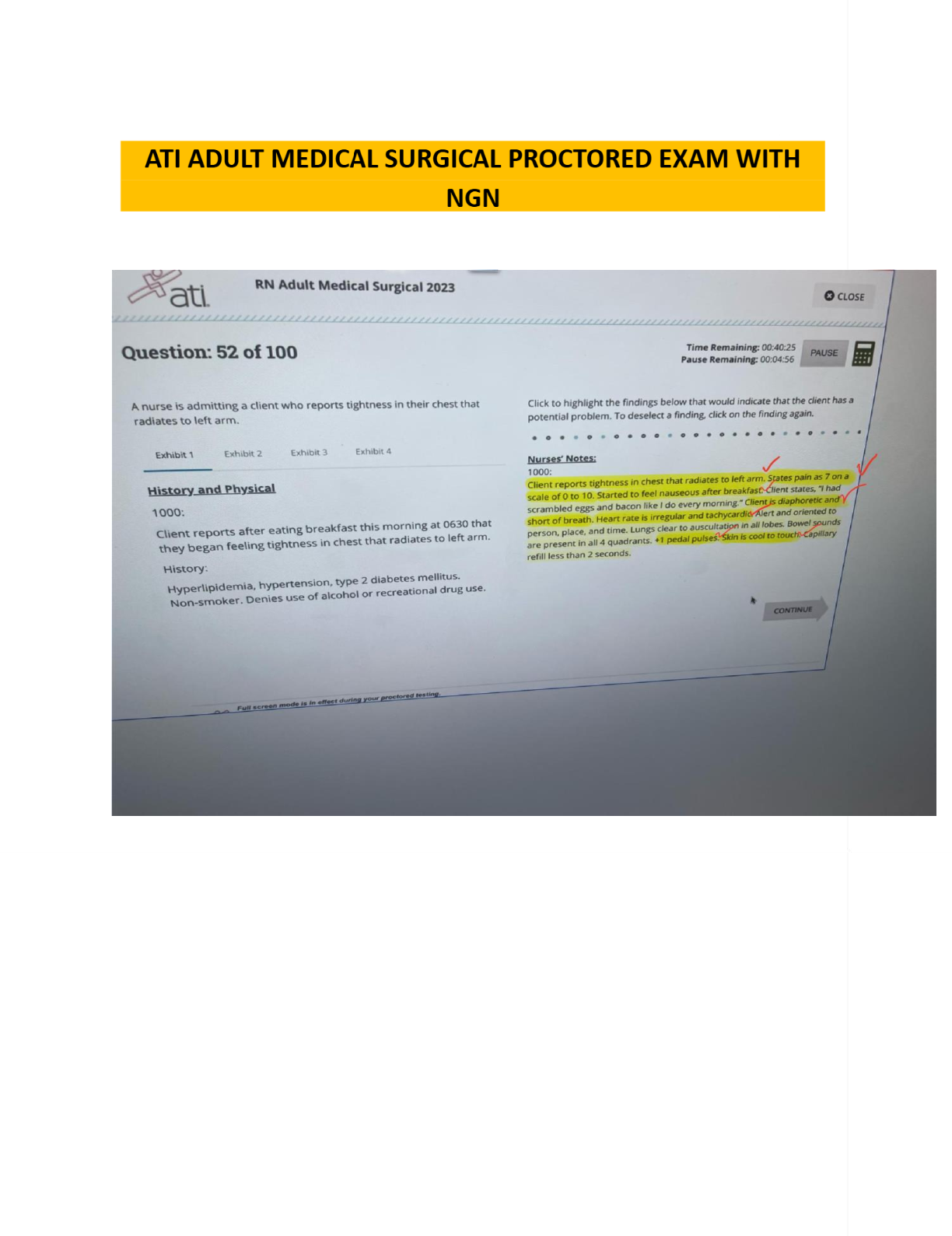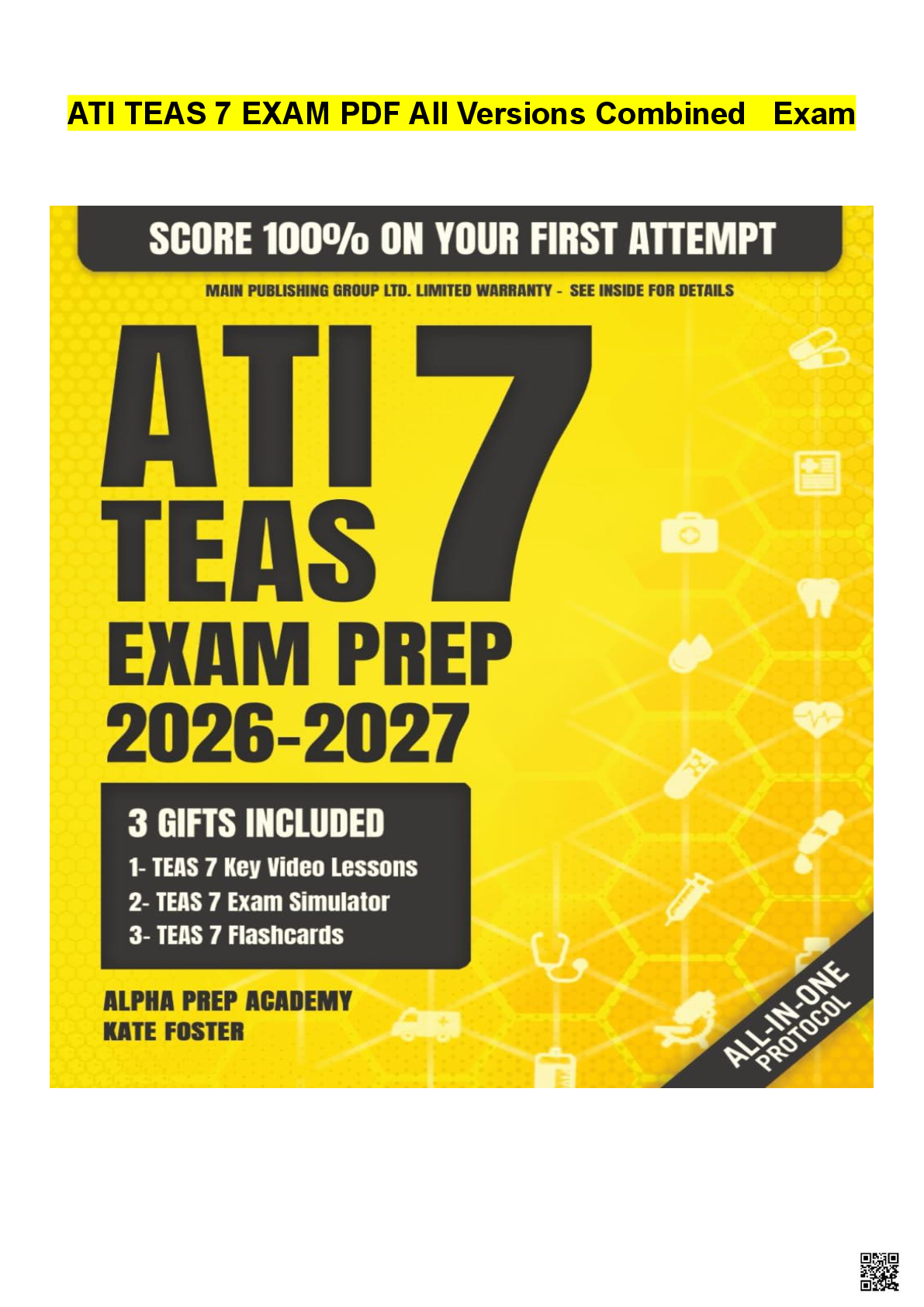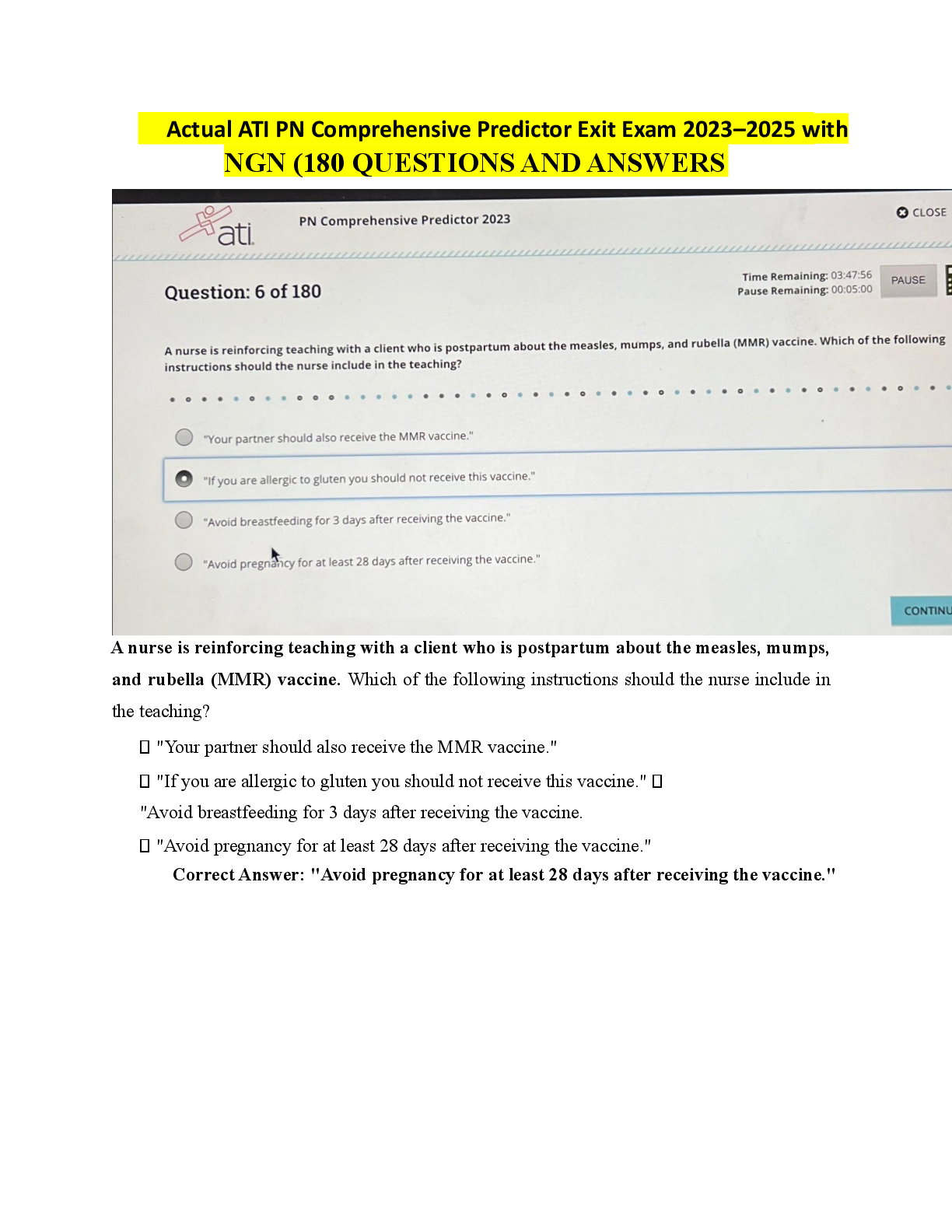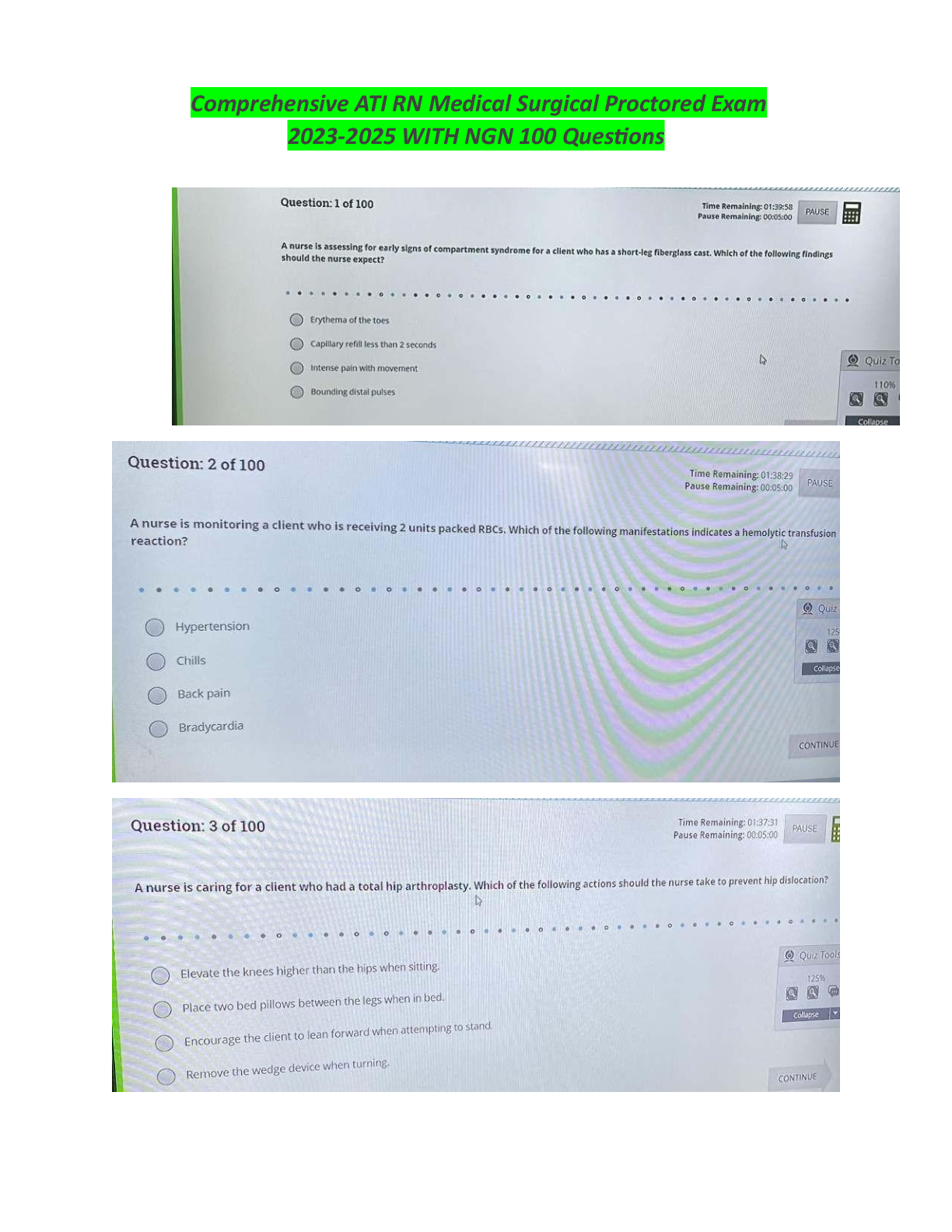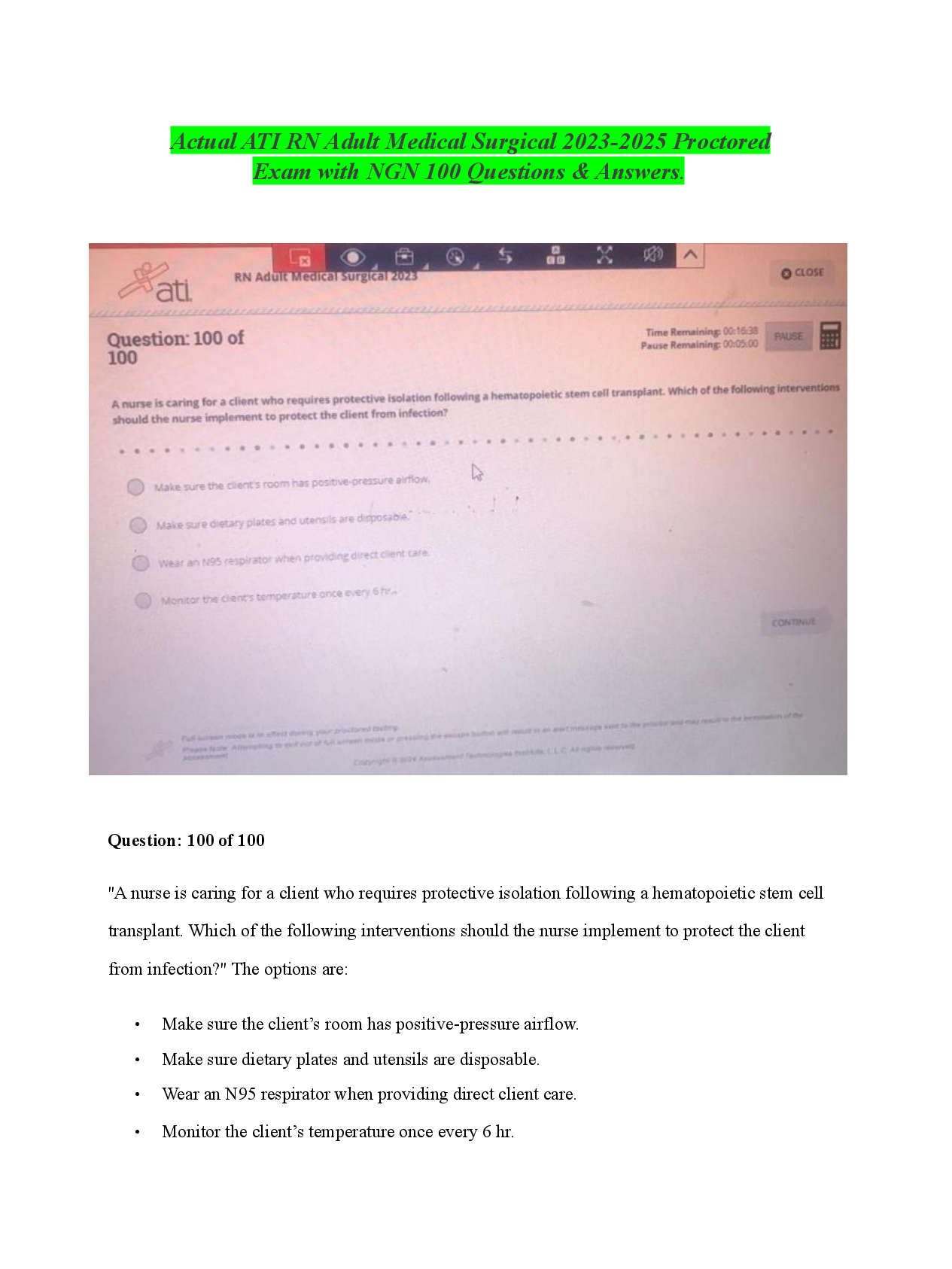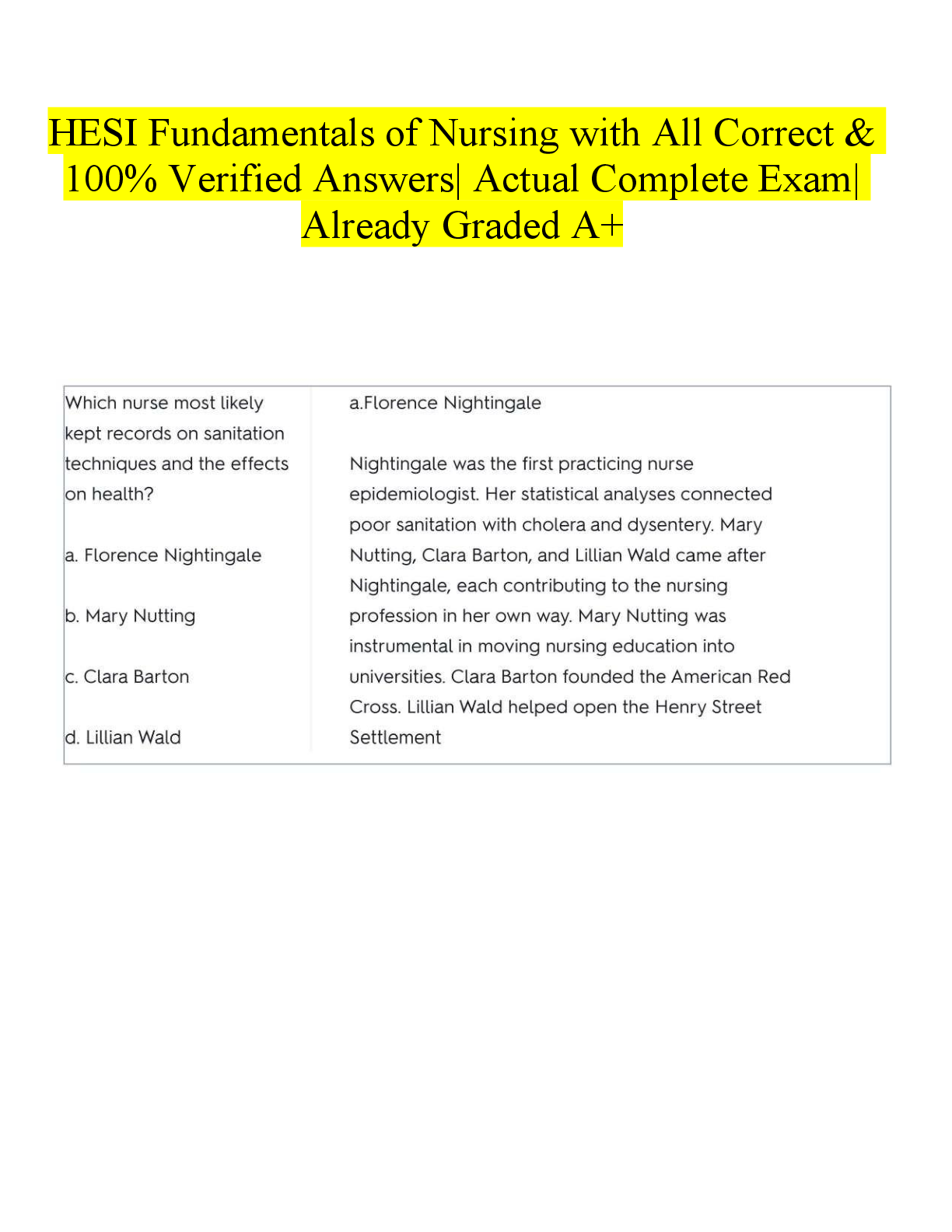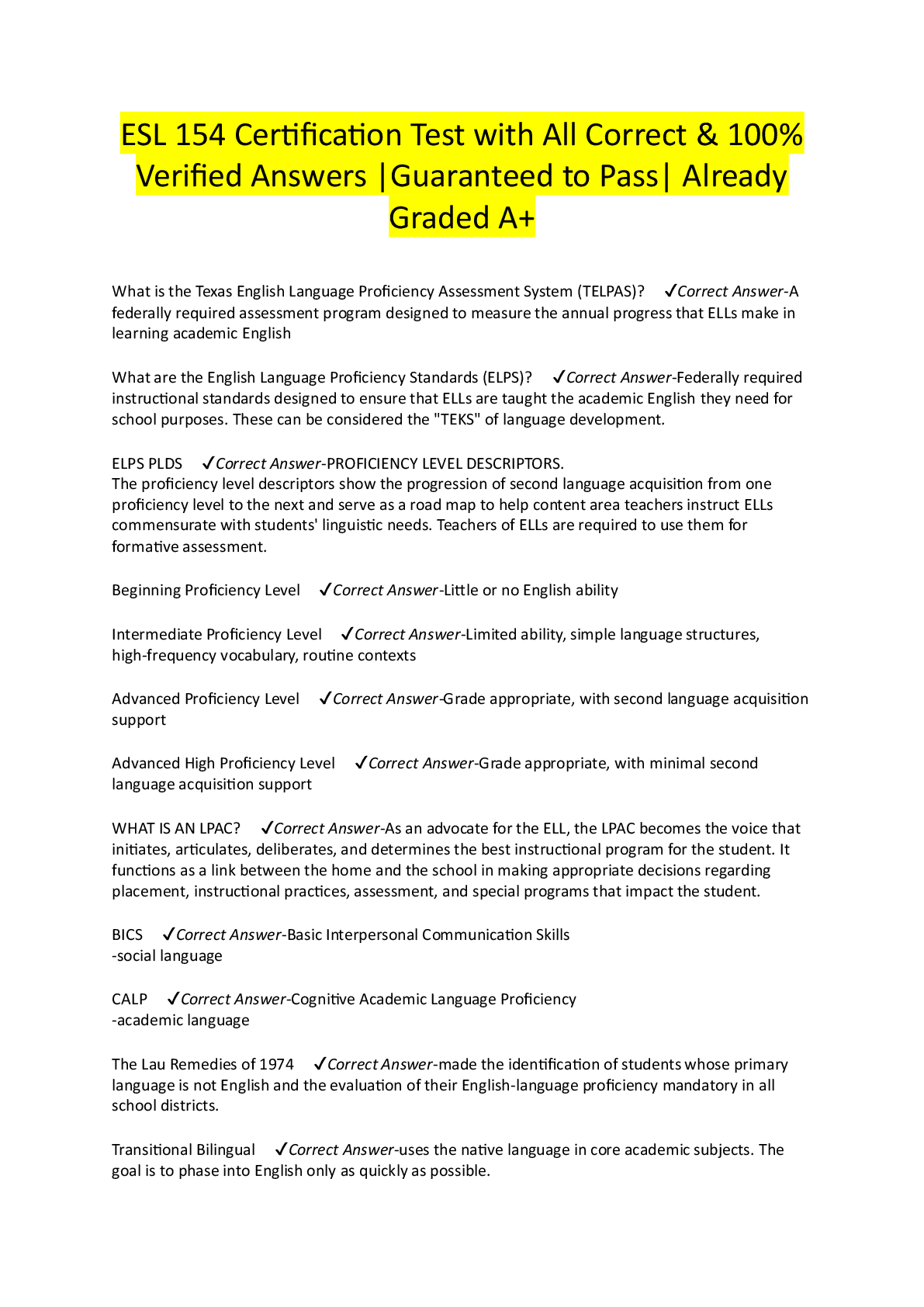Health Care > EXAM > HESI EXIT RN EXAM COMPLETE NEW VERSION 2023 QUESTIONS WITH ANSWERS A GRADE 100% PASS (All)
HESI EXIT RN EXAM COMPLETE NEW VERSION 2023 QUESTIONS WITH ANSWERS A GRADE 100% PASS
Document Content and Description Below
HESI EXIT RN EXAM COMPLETE NEW VERSION 2023 QUESTIONS WITH ANSWERS A GRADE 100% PASS 1. A nurse observes a patient rising from a chair slowly by pushing on the chair arms. Which type of tensio ... n and contraction did the nurse observe? a. Eccentric tension and isotonic contraction b. Eccentric tension and isometric contraction c. Concentric tension and isotonic contraction d. Concentric tension and isometric contraction ANS: A This movement causes eccentric tension and isotonic contraction. Eccentric tension helps control the speed and direction of movement. For example, when using an overhead trapeze, the patient slowly lowers himself to the bed. The lowering is controlled when the antagonistic muscles lengthen. By pushing on the chair arms and rising eccentric tension and isotonic contraction occurred. In concentric tension, increased muscle contraction causes muscle shortening, resulting in movement such as when a patient uses an overhead trapeze to pull up in bed. Concentric and eccentric muscle actions are necessary for active movement and therefore are referred to as dynamic or isotonic contraction. Isometric contraction (static contraction) causes an increase in muscle tension or muscle work but no shortening or active movement of the muscle (e.g., instructing the patient to tighten and relax a muscle group, as in quadriceps set exercises or pelvic floor exercises). 2. A nurse notices that a patient has a structural curvature of the spine associated with vertebral rotation. Which condition will the nurse most likely find documented in the patient’s medical record? a. Scoliosis b. Arthritis c. Osteomalacia d. Osteogenesis ANS: A Scoliosis is a structural curvature of the spine associated with vertebral rotation. Osteogenesis imperfecta is an inherited disorder that makes bones porous, short, bowed, and deformed. Osteomalacia is an uncommon metabolic disease characterized by inadequate and delayed mineralization, resulting in compact and spongy bone. Arthritis is an inflammatory joint disease characterized by inflammation or destruction of the synovial membrane and articular cartilage and by systemic signs of inflammation. 3. A nurse [Show More]
Last updated: 2 years ago
Preview 1 out of 13 pages
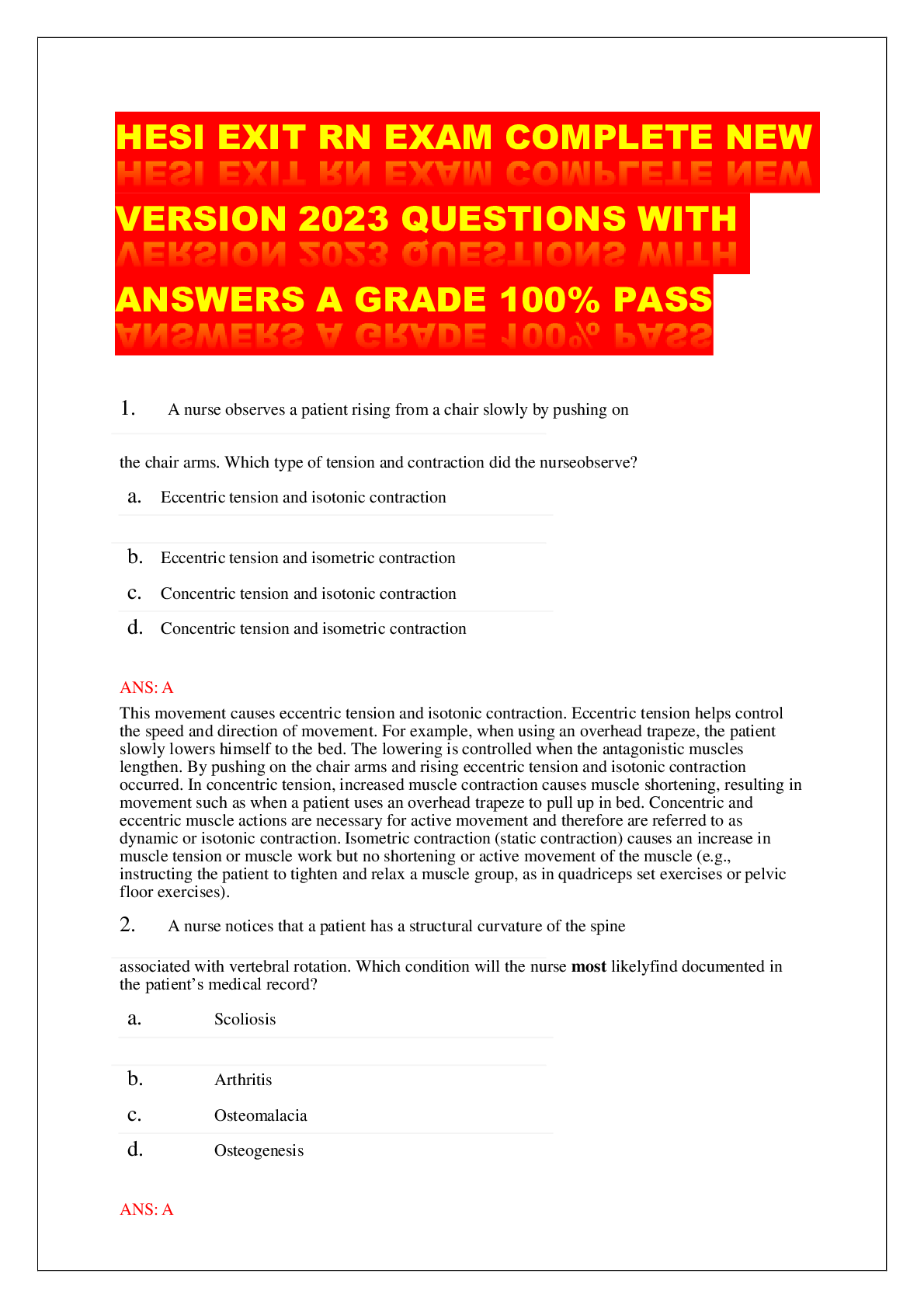
Buy this document to get the full access instantly
Instant Download Access after purchase
Buy NowInstant download
We Accept:

Reviews( 0 )
$15.00
Can't find what you want? Try our AI powered Search
Document information
Connected school, study & course
About the document
Uploaded On
Apr 18, 2023
Number of pages
13
Written in
All
Additional information
This document has been written for:
Uploaded
Apr 18, 2023
Downloads
0
Views
112

